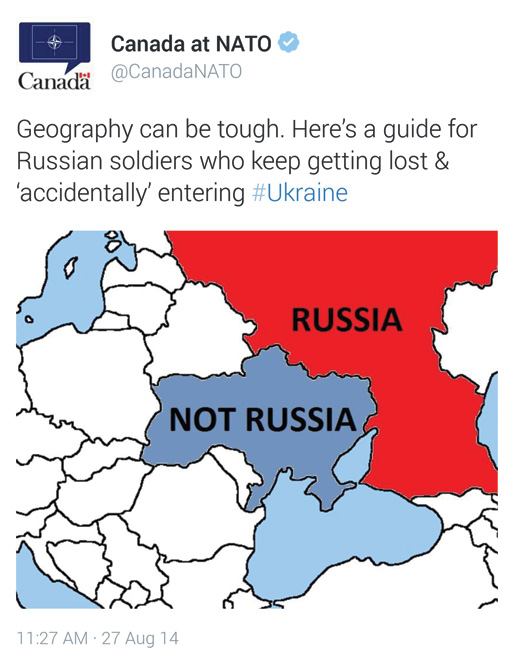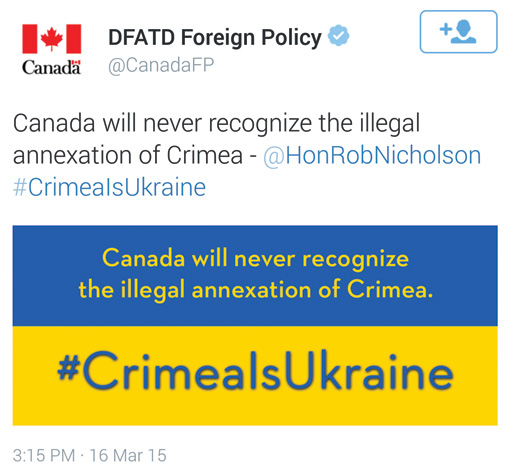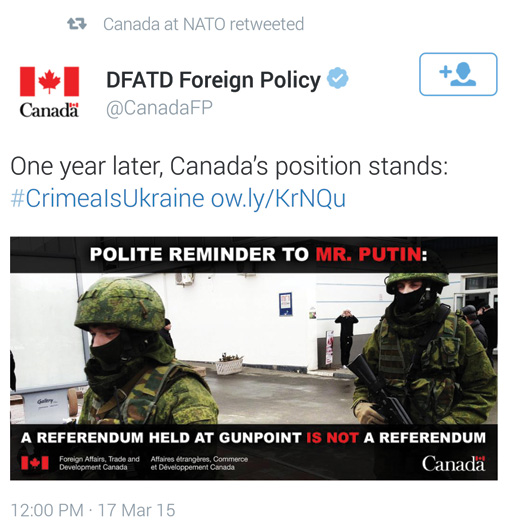It takes only a cursory glance at recent headlines to see that the Russian bear has not only awoken, but is angry, quite possibly rabid.
Not content to merely create chaos in rewriting the map of Eastern Europe, or to panic its neighbours farther afield with constant bomber flights across their flanks, the Russians have also recently turned their sights to the far north.
In mid-March, no less than 80,000 Russian troops (yes, that eighty thousand number is correct, at least according to TASS, one of Russia’s official news agencies) were involved in an airborne exercise in the Arctic.
Billed as a “snap check of combat readiness,” Russia’s Northern Fleet, Airborne Forces and multiple other formations made a massive display of getting ready to fight in the north, going so far as to land airborne troops in places such as the Franz Josef Land archipelago in the High Arctic.
More than 55 ships and submarines took part, with 110 airplanes and helicopters. The exercise was, at least theoretically, intended to assess the capability of the Northern Fleet to ensure Russia’s military security in the Arctic, but the more realistic purpose of the exercise could be more accurately construed as cold-weather sabre-rattling.
Not much is possible in terms of a proportional response by Canada to a Russian Arctic exercise of that scope. Meanwhile, the opening of the military’s long-awaited deep water port at Nanisivik, Nunavut, at the entrance to the Northwest Passage, has been delayed again, this time until 2018. It was originally scheduled to open in 2012.
That’s not to say Canada has backed away from the fight entirely. Beyond our naval deployments in the ongoing effort by the North Atlantic Treaty Organization to deter Russian expansionism in Eastern Europe, the Canadian government has been very active on Twitter lately, opposing Russian aggression with a series of demonstrably hardline tweets.
The first was this tweet by the Canadian delegation to NATO in August, making a sarcastic objection to Russia’s continuous—but lame—denials that their soldiers were involved in the turmoil in eastern Ukraine:

The cyberspace war of words has grown even more adamant since then. Consider, for example, this tweet from the Department of Foreign Affairs, Trade and Development:

It’s been more than a year since Russia annexed the Crimean Peninsula by invading the country, semi-covertly, with a large military force stripped of Russian flags and insignia. Shortly after taking military control, it held a referendum which indicated that Crimea’s citizens overwhelmingly wanted to become a part of Russia. Canada’s bellicose twitterers have something to say about that, too:

There is some doubt Putin will reverse his course on imperial expansionism solely due to Canada’s staunch tweets. So, NATO is making its opinion known in a serious way as well: with big guns and heavy armour. As a part of Operation Atlantic Resolve, American M1 Abrams main battle tanks, F-15 Eagles and A-10 Warthog tank-killers have been deployed to Lithuania, Estonia and Poland, NATO allies who currently fear Russia’s intentions.
While NATO has stopped short of sending heavy weapons into the Ukraine, Canada has contributed to helping the war-torn country defend itself by sending night-vision goggles so the Ukrainians can watch the Russians sneak across the border, even when it’s super dark out.
Beyond the twitter war, Prime Minister Stephen Harper also recently threw down a gauntlet of sorts. “Canada will not forget Vladimir Putin’s reckless actions in Ukraine. Any solution to the current crisis will need to respect the territorial integrity, sovereignty, independence and constitution of Ukraine,” said Harper. “Whether it takes five months or 50 years, Canada will never recognize this annexation as being the genuine will of the Ukrainian people. We have instead maintained our call that the Putin regime cease the destabilization campaign it has orchestrated and fully withdraw from Crimea and eastern Ukraine.”
As Harper rightly notes, Canada’s role in attempting to deter further expansionism has put Canadians out in the field, in harm’s way. “In support of NATO measures in response to Russian aggression,” he said, “Canada has played a leading role in deploying air, land and maritime forces in the area to promote security and stability in Eastern and Central Europe, as part of the Alliance’s assurance measures.”
The most recent direct confrontation between Russia and Canada occurred when HMCS Fredericton made its transit of the Black Sea as a part of a NATO operation. While some controversy exists concerning what actually happened, Minister of Defence Jason Kenney maintains that there have been “a number of interactions between the Russian Federation and the NATO fleet in the Black Sea.” In early March, Kenney reported that an aircraft passed 500 feet overhead, and that earlier, Fredericton was trailed by “a confirmed Russian military intelligence vessel.”
In news from Canada’s other conflict, the one in Iraq, the battle against the Islamic State of Iraq and the Levant (ISIL) will continue for at least a year and will expand to include bombing in Syria.
News from the ground in Canada’s shooting war is pretty scarce. Not only is reporting from the immediate region somewhat difficult, but the Canadian Armed Forces have been reticent to allow journalists the access to which they are accustomed.
However, the counter-culture periodical Vice has interviewed a “Canadian commander” involved with flying the Auroras.
It turns out that the substantial Canadian military contingent at Camp Canada is sometimes treated to Tim Hortons. “We have had the odd Timmies run,” the commander told Vice. “In fact, I think just yesterday, the senior leadership organized a Timmies run from the local Tim Hortons in Kuwait City, which was a huge boost to morale for everybody.”
Who knew there was a Tim Hortons in Kuwait?
Advertisement












